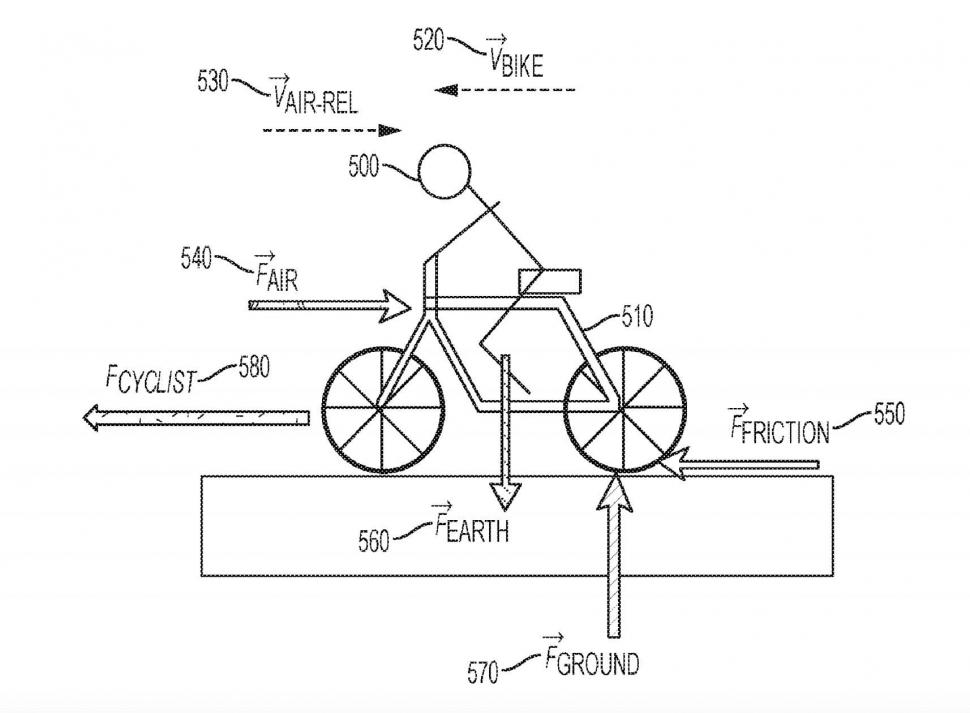- News
- Reviews
- Bikes
- Accessories
- Accessories - misc
- Computer mounts
- Bags
- Bar ends
- Bike bags & cases
- Bottle cages
- Bottles
- Cameras
- Car racks
- Child seats
- Computers
- Glasses
- GPS units
- Helmets
- Lights - front
- Lights - rear
- Lights - sets
- Locks
- Mirrors
- Mudguards
- Racks
- Pumps & CO2 inflators
- Puncture kits
- Reflectives
- Smart watches
- Stands and racks
- Trailers
- Clothing
- Components
- Bar tape & grips
- Bottom brackets
- Brake & gear cables
- Brake & STI levers
- Brake pads & spares
- Brakes
- Cassettes & freewheels
- Chains
- Chainsets & chainrings
- Derailleurs - front
- Derailleurs - rear
- Forks
- Gear levers & shifters
- Groupsets
- Handlebars & extensions
- Headsets
- Hubs
- Inner tubes
- Pedals
- Quick releases & skewers
- Saddles
- Seatposts
- Stems
- Wheels
- Tyres
- Health, fitness and nutrition
- Tools and workshop
- Miscellaneous
- Tubeless valves
- Buyers Guides
- Features
- Forum
- Recommends
- Podcast
TECH NEWS
 Apple Watch power - 1.jpg
Apple Watch power - 1.jpgApple looks to add cycling power measurement feature to Apple Watch
Apple has applied for a US patent that could add a cycling power output function to its Apple Watch. The US brand says that measuring heart rate, position and orientation, velocity, altitude and riding position will allow it to estimate a cyclist's total power output.
Apple filed an application titled ‘Calculating an Estimate of Wind Resistance Experienced by a Cyclist’ in September last year.
Essentially – and we’re summarising a 6,800 word document here – Apple is looking at estimates for the various sources of resistance experienced by a cyclist, and thus at the total power output of the rider.
“Estimates of the wind resistance experienced by a cyclist can be obtained through calibration of the effective resistance a cyclist experiences as a function of heading, and thereby separated from the effective resistance due to rolling resistance and grade,” says Apple. “Once such estimates are obtained, the user's total power output can be more accurately tracked throughout an activity.”
Prepare yourself for repeated use of the phrase ‘wearable device’, possibly more than you’ve experienced in your life up until this point. What Apple has in mind is an Apple Watch.
“The wearable device can include a heart rate sensor to provide a series of measurements of cyclist heart rate. The wearable device can also include motion sensors to collect data about the wearable device's position and orientation in space and to track changes to the wearable device's position and orientation over time.
“Accelerometers in the device may track acceleration, including high frequency variation in acceleration, and use this to detect surface type. Because a cyclist can wear the wearable device, the orientation of the device can provide information about the cyclist's body position.
“For example, when cycling, the cyclist's arms may be in a variety of positions, depending on the cyclist's style of riding and the type of handlebars on the bicycle. If the cyclist wears the wearable device on the cyclist's wrist, the wearable device may be able to infer the cyclist's hand position, and based on this hand position may be able to infer the cyclist's riding position and thereby provide an estimate of drag contributed by the cyclist's body.”
Alright, alright! There’s a lot going on there. As anyone with a conventional power meter knows, a higher heart rate doesn’t always mean a higher power output. And if your hands are on the drops your body is likely to be positioned in such a way that you’ll experience less air resistance than if your hands are on the hoods (see figures below), but not necessarily.
Anyway, we’re getting to the crux of the matter so you’d better concentrate.
“Combining these measurements of heart rate, position and orientation, velocity, altitude, and riding position, the cyclist's total power output and the contribution of each component of that power output may be estimated,” says Apple. “By estimating the relative contribution of each component to total power output, a less expensive and more power-efficient technique for providing accurate estimates of cyclist power output can be created.”
Okay, so that’s the theory, but how accurate is accurate? At this stage, we don’t think that SRM or PowerTap have too much to worry about because it certainly doesn’t sound to us as if Apple is going to end up with precise, consistent power figures using these estimates. But who knows?
Will this power output function ever see the light of day? We just don’t know. Apple, like many other technology companies, applies for (and is granted) loads of patents that never actually make it out into the real world along with many that do, so we’ll all just have to wait and see.
It’s US Patent Application 20170074897 if you want to check it out yourself. Be warned, it’s heavy going in parts!
Mat has been in cycling media since 1996, on titles including BikeRadar, Total Bike, Total Mountain Bike, What Mountain Bike and Mountain Biking UK, and he has been editor of 220 Triathlon and Cycling Plus. Mat has been road.cc technical editor for over a decade, testing bikes, fettling the latest kit, and trying out the most up-to-the-minute clothing. He has won his category in Ironman UK 70.3 and finished on the podium in both marathons he has run. Mat is a Cambridge graduate who did a post-grad in magazine journalism, and he is a winner of the Cycling Media Award for Specialist Online Writer. Now over 50, he's riding road and gravel bikes most days for fun and fitness rather than training for competitions.
Latest Comments
- richliv 2 sec ago
"What we’ve looked at is creating value for money, taking the most premium sports properties as possible and creating the adjacency, creating a...
- Simon E 4 min 9 sec ago
We don't need to use the individual's health benefits in an argument with stupid car drivers who don't cycle and have blindly swallowed the car...
- panda 7 min 29 sec ago
I don't know what metrics (if any) the BBC governance model solves for; I suspect there aren't any. Eastenders definitely gets a viewing figures...
- Paul J 53 min 21 sec ago
I cycled in Italy on a holiday once. I can't claim my 4 or so bike rides were representative, but even in that short time, yeah, saw a number of...
- chrisonabike 1 hour 1 min ago
Well, it's a victory for people power... unfortunately I think a mistaken one *. The problem (as Chris Boardman has noted) is that such failures...
- a1white 1 hour 27 min ago
How did you find the Planet X Titanium frames? You never see reviews of them anywhere, but they look good value.
- chrisonabike 2 hours 2 min ago
I'd start even younger... (I actually think driving licences should need renewed after a period, whatever age)....
- Secret_squirrel 3 hours 41 min ago
Good for them and cycling in general.
- David9694 4 hours 44 min ago
It's a topsey-turvey world some times:...


Add new comment
13 comments
They need to improve the performance of the optical HR first
https://www.youtube.com/watch?v=DjDKCrUfoc8
Good lord, look at the rake on those forks in the top diagram!
And having no seat tube and the bottom bracket halfway between handlebars and seat(assuming it is in the normal position at the end of the down tube) will make pedalling interesting.
Given they can't even draw a diamond framed bike with any level of precision, I wouldn't trust the "wearable device" to give readings of any precision either.
Would a barometer not make much of the estimation regarding wind resistance more accurate?
I know there's all kinds of factors such as clothing drag etc that they can never really get very accurate (although some benchmarked estimates would help) but getting an app to work out your frontal area on the bike in each positions through a photo at a distance would make this a little more accurate too?
I know it's never going to be as accurate as a powermeter, but as an add on function to a preexisting piece of technology it might be cool - assuming it was refined enough.
I can't see trying to distinguish riding on the hoods from riding the drops being terribly reliable based only on wrist position.
The headline is wrong. This isn't "power measurement" this is "power estimation". Clickbait?!
The cynic in me can't help thinking that this is just a publicity piece from Apple!
So they've attempted to patent 1st year engineer degree mathematics?
Taking body position and road surface into account makes is potentially significantly better than other existing power "estimators".
Remember this is the US Patent Office - http://www.google.co.uk/patents/US4022227 - they allowed that, the combover. They have form for allowing patents when there is prima facie prior art that should preclude it.
I'm pretty sure also that in the U.S. you just have to be first to file then you get to fight it out in court later. That is why the U.S. based software company I work for pays a bonus for every patent application that we file.
The USPTO does examine patent applications on merit, and should not grant patents for inventions unless they are new and non-obvious over earlier publicly-available material that is available to the examiners.
But yes, some poor-quality patents do get through the net (out of about 300,000 per year).
Doesn't sound particularly reliable...
Shirley iPed L?
Good one.
And don't call me Shirley.
Powerpod?